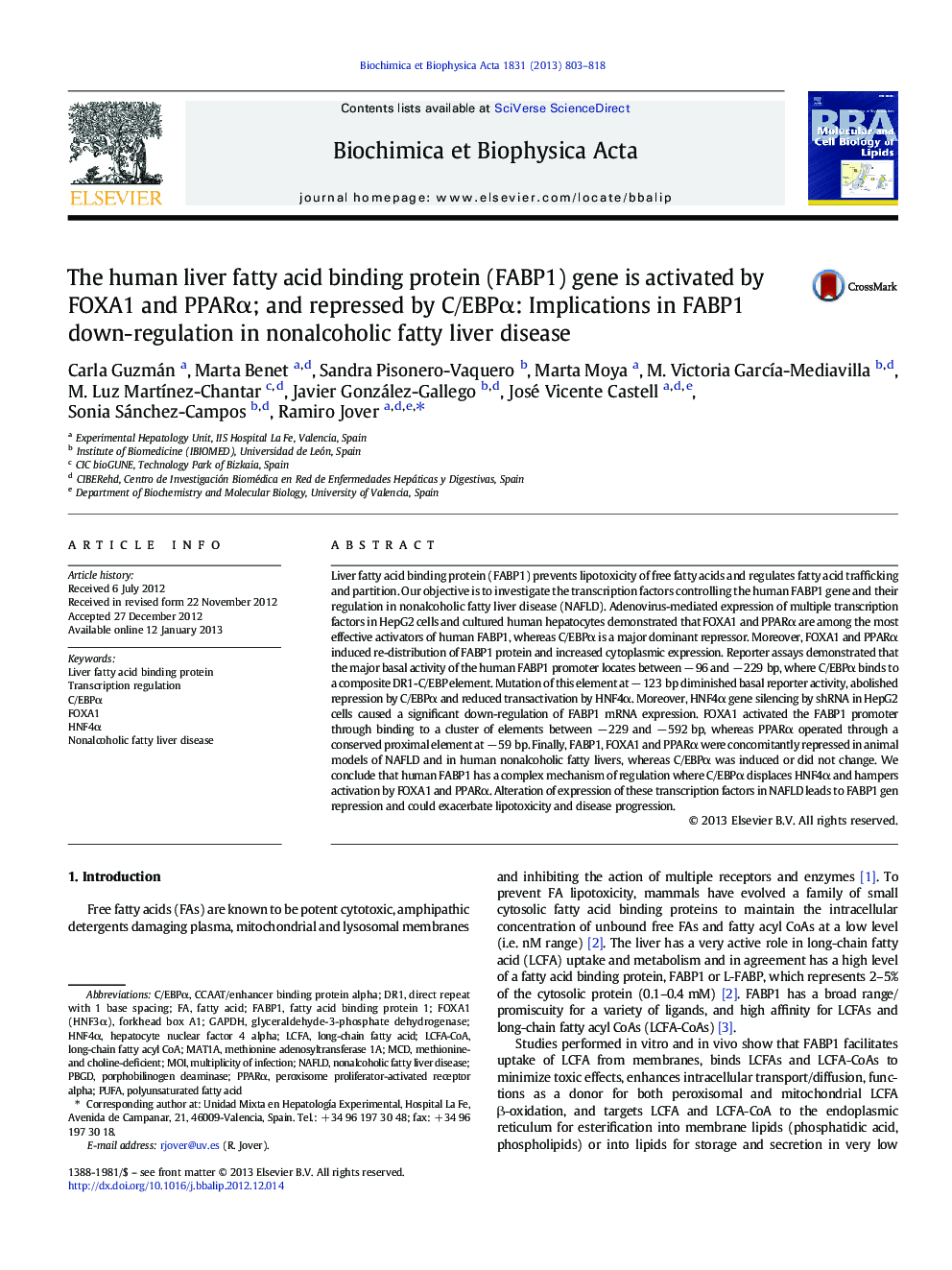| Article ID | Journal | Published Year | Pages | File Type |
|---|---|---|---|---|
| 1949255 | Biochimica et Biophysica Acta (BBA) - Molecular and Cell Biology of Lipids | 2013 | 16 Pages |
Liver fatty acid binding protein (FABP1) prevents lipotoxicity of free fatty acids and regulates fatty acid trafficking and partition. Our objective is to investigate the transcription factors controlling the human FABP1 gene and their regulation in nonalcoholic fatty liver disease (NAFLD). Adenovirus-mediated expression of multiple transcription factors in HepG2 cells and cultured human hepatocytes demonstrated that FOXA1 and PPARα are among the most effective activators of human FABP1, whereas C/EBPα is a major dominant repressor. Moreover, FOXA1 and PPARα induced re-distribution of FABP1 protein and increased cytoplasmic expression. Reporter assays demonstrated that the major basal activity of the human FABP1 promoter locates between − 96 and − 229 bp, where C/EBPα binds to a composite DR1-C/EBP element. Mutation of this element at − 123 bp diminished basal reporter activity, abolished repression by C/EBPα and reduced transactivation by HNF4α. Moreover, HNF4α gene silencing by shRNA in HepG2 cells caused a significant down-regulation of FABP1 mRNA expression. FOXA1 activated the FABP1 promoter through binding to a cluster of elements between − 229 and − 592 bp, whereas PPARα operated through a conserved proximal element at − 59 bp. Finally, FABP1, FOXA1 and PPARα were concomitantly repressed in animal models of NAFLD and in human nonalcoholic fatty livers, whereas C/EBPα was induced or did not change. We conclude that human FABP1 has a complex mechanism of regulation where C/EBPα displaces HNF4α and hampers activation by FOXA1 and PPARα. Alteration of expression of these transcription factors in NAFLD leads to FABP1 gen repression and could exacerbate lipotoxicity and disease progression.
► A model for transcription regulation of human FABP1 gene in liver is proposed. ► HNF4α and FOXA1 contribute to the high constitutive FABP1 transcription. ► PPARα induces FABP1 in response to ligands such as GW7647. ► CEBPα is a repressor, competes with HNF4α and blunts activation by FOXA1 and PPARα. ► Repression of FOXA1 and PPARα is concomitant to FABP1 down-regulation in NAFLD.
